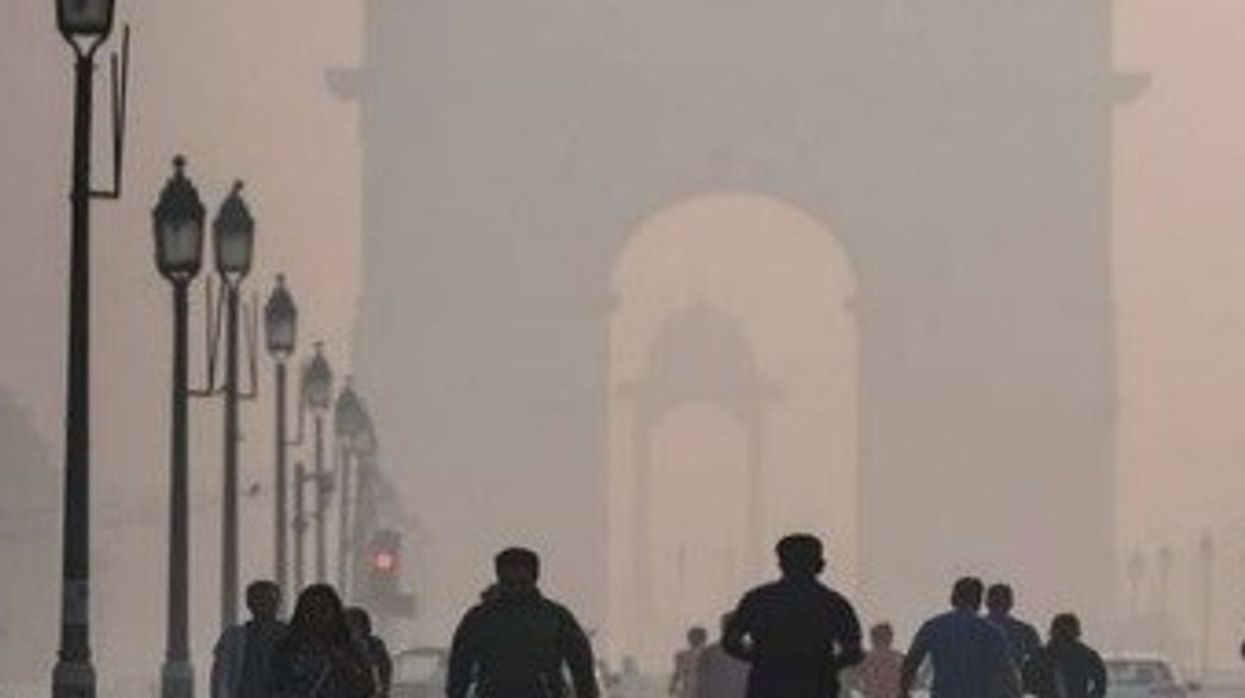A landmark study conducted in India has revealed that breathing polluted air elevates the risk of type 2 diabetes. Researchers in Delhi and Chennai observed that exposure to high levels of PM2.5 particles in the air is linked to elevated blood sugar levels and a higher incidence of type 2 diabetes.
This study published in the BMJ Open Diabetes Research and Care journal is the first of its kind in India to shed light on the connection between air pollution and diabetes.
This research is a part of a long-term study on chronic diseases in India initiated in 2010. Significantly, it marks the first in-depth investigation on the link between exposure to ambient PM2.5 particles and type 2 diabetes in India, a country grappling with severe air pollution issues, a report by The Guardian said.
The study conducted in the cities of Delhi and Chennai found that inhaling air with high amounts of fine pollution particles (PM2.5) -- 30 times thinner than a strand of hair -- led to high blood sugar levels and increased type-2 diabetes incidence.
Exposure to fine particulate matter has been associated with several cardiovascular and cardiometabolic diseases, the researchers said.
However, such evidence mostly originates from low-pollution settings or cross-sectional studies, thus necessitating evidence from regions with high air pollution levels, such as India, where the burden of non-communicable diseases is high, they said.
The team, including researchers from the Centre for Chronic Disease Control, New Delhi, assessed a group of over 12,000 men and women from 2010 to 2017 and measured their blood sugar levels periodically.
They also used satellite data and air pollution exposure models to determine the air pollution in the locality of each participant during that time.
The study showed that one month of exposure to PM2.5 led to increased levels of blood sugar and prolonged exposure of one year or more led to higher risk of diabetes.
It also found that for every 10 micrograms per cubic metre (µg/m3) increase in annual average PM2.5 level in the two cities, the risk for diabetes increased by 22 per cent.
Siddhartha Mandal, the lead investigator of the study and a researcher at the Centre for Chronic Disease Control in Delhi, pointed out that Indians, with their low BMI and high fat proportion, are inherently more susceptible to diabetes compared to Western populations.
He said the impact of air pollution as an environmental factor, coupled with lifestyle changes over the past few decades, has contributed significantly to the rising diabetes rates.
Additionally, Dr V Mohan, chairman of the Madras Diabetes Research Foundation and a paper author, highlighted the study's significance, revealing that pollution is a newfound cause for diabetes, challenging previous assumptions that diet, obesity, and physical activity solely explained the higher prevalence of diabetes in urban Indians compared to their rural counterparts.
Another study on the same group in Delhi found that average annual exposure to PM2.5 (92μg/m3) led to increased blood pressure and a higher risk of hypertension.
The research indicates that elevated PM2.5 levels in Indian cities can trigger diabetes and hypertension, which in turn can lead to atherosclerosis, heart attacks, and heart failures.
PM2.5 particles, containing sulfates, nitrates, heavy metals, and black carbon, can damage blood vessels, increase blood pressure, cause inflammation in fat cells, and directly impact the heart muscle. Additionally, PM2.5 acts as an endocrine disruptor, affecting insulin production and its effectiveness.
The findings suggest a potential link between pollution and various health issues such as hypothyroidism, polycystic ovarian syndrome (PCOS), and gestational diabetes due to its disruption of the endocrine system responsible for hormone production in the body.
Researchers are now exploring pollution's impact on cholesterol, vitamin D levels, and various life cycle factors such as birth weight, pregnant women’s health, adolescent insulin resistance, and the risk of Parkinson’s and Alzheimer’s disease.
Despite the alarming findings, scientists believe reducing pollution can alleviate the burden of diabetes and other non-communicable diseases.
Public policy initiatives, including restrictions on older diesel vehicles, limited construction, and bypass highways, led to a 22% reduction in PM2.5 levels from 2016 to 2021.
While this reduction is welcomed, experts stress the need for similar tailored measures nationwide to address the issue effectively.
There exists a major research gap due to the lack of robust exposure assessment and longitudinal studies in the large south Asian population which experiences a high burden of disease due to diabetes.
"This study provides evidence linking short-term, medium-term and long-term exposure to PM2.5, assessed from locally developed high-resolution spatiotemporal models, glycemic markers and incidence of diabetes from a highly polluted region with a high burden of diabetes," the authors of the study noted.
"The findings add to the existing evidence from low-pollution scenarios in the Western population," they said.
The researchers noted that the combined evidence provides directions for devising and implementing region-specific and population-specific policies.
These policies can be targeted towards reducing ambient air pollution to counter the high burden of diabetes to achieve significant population-level public health gains, they said.
The team also included researchers from Public Health Foundation of India, New Delhi, Harvard University and Emory University, US, All India Institute of Medical Sciences, New Delhi, and Madras Diabetes Research Foundation, Chennai.
(With inputs from PTI)






 Mareyah Bhatti , a sustainability strategist and passionate home cookMareyah Bhatti
Mareyah Bhatti , a sustainability strategist and passionate home cookMareyah Bhatti






